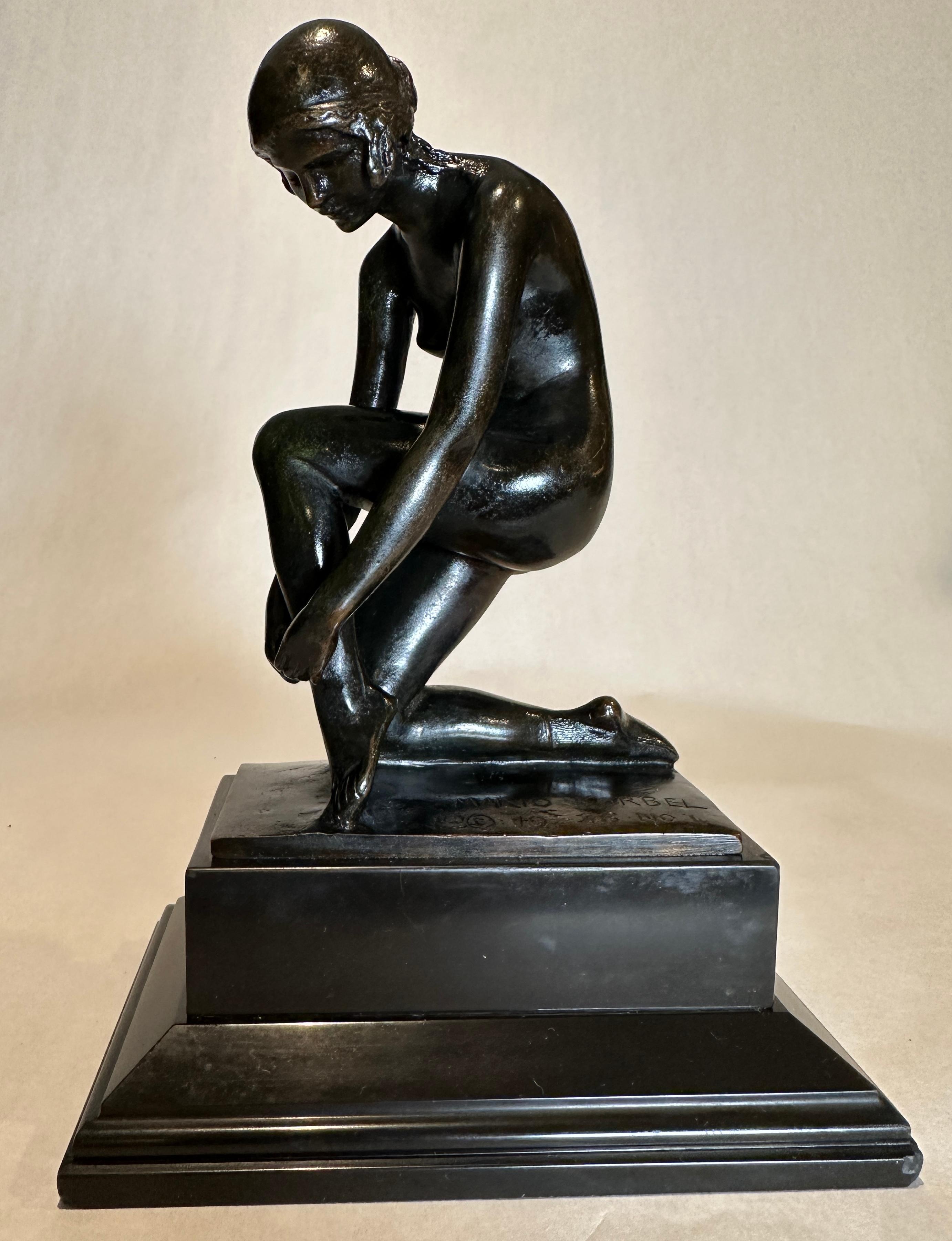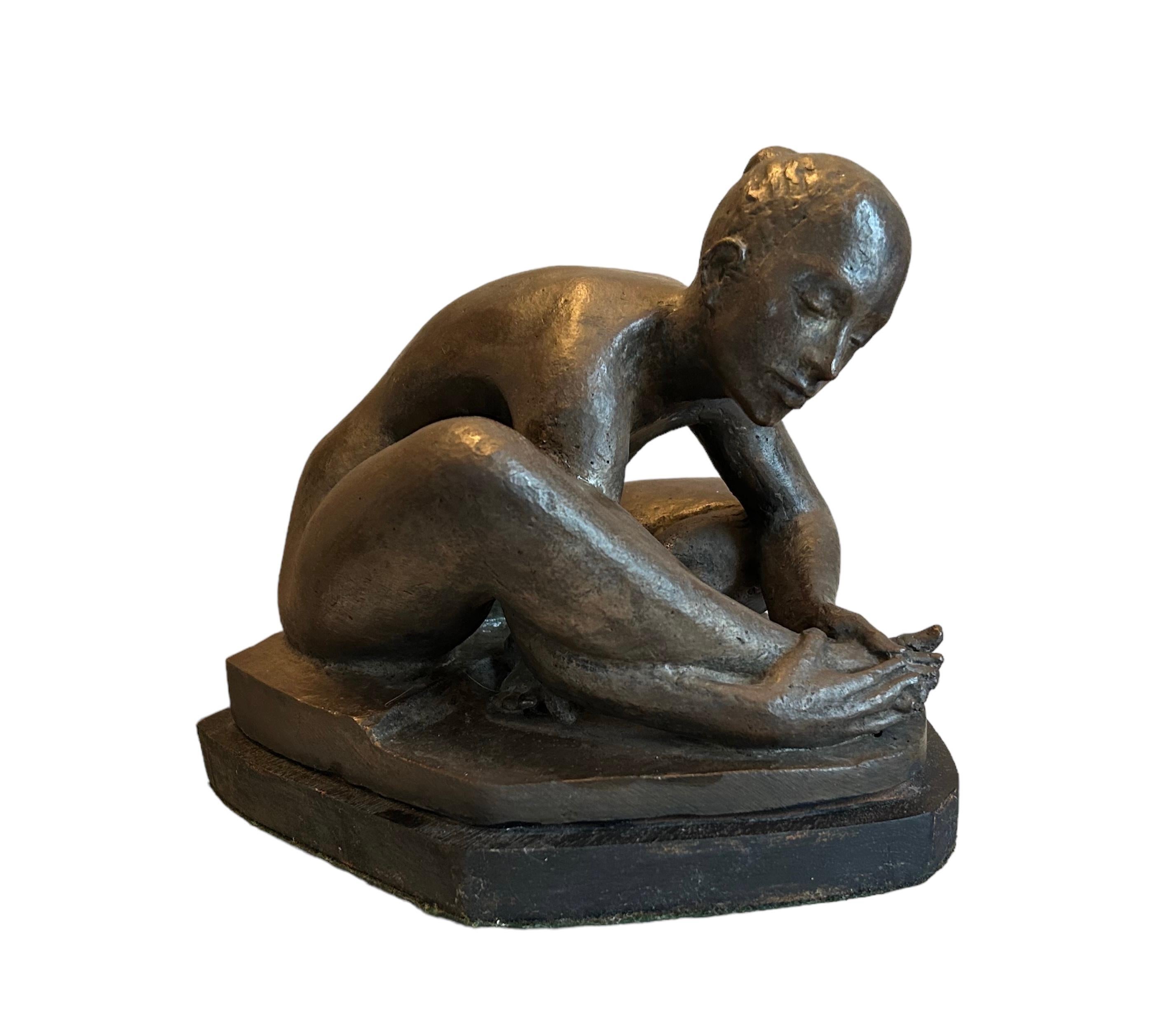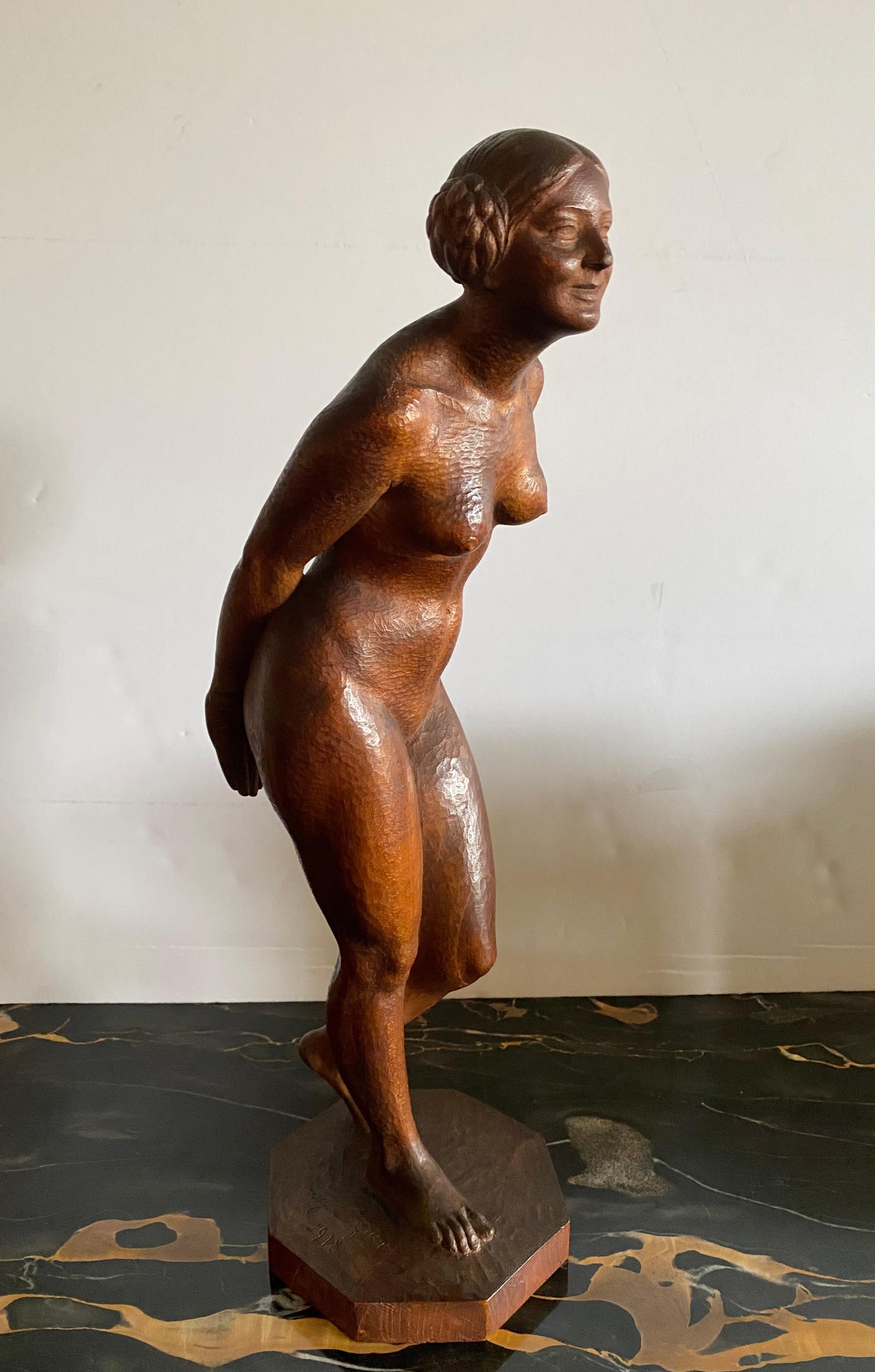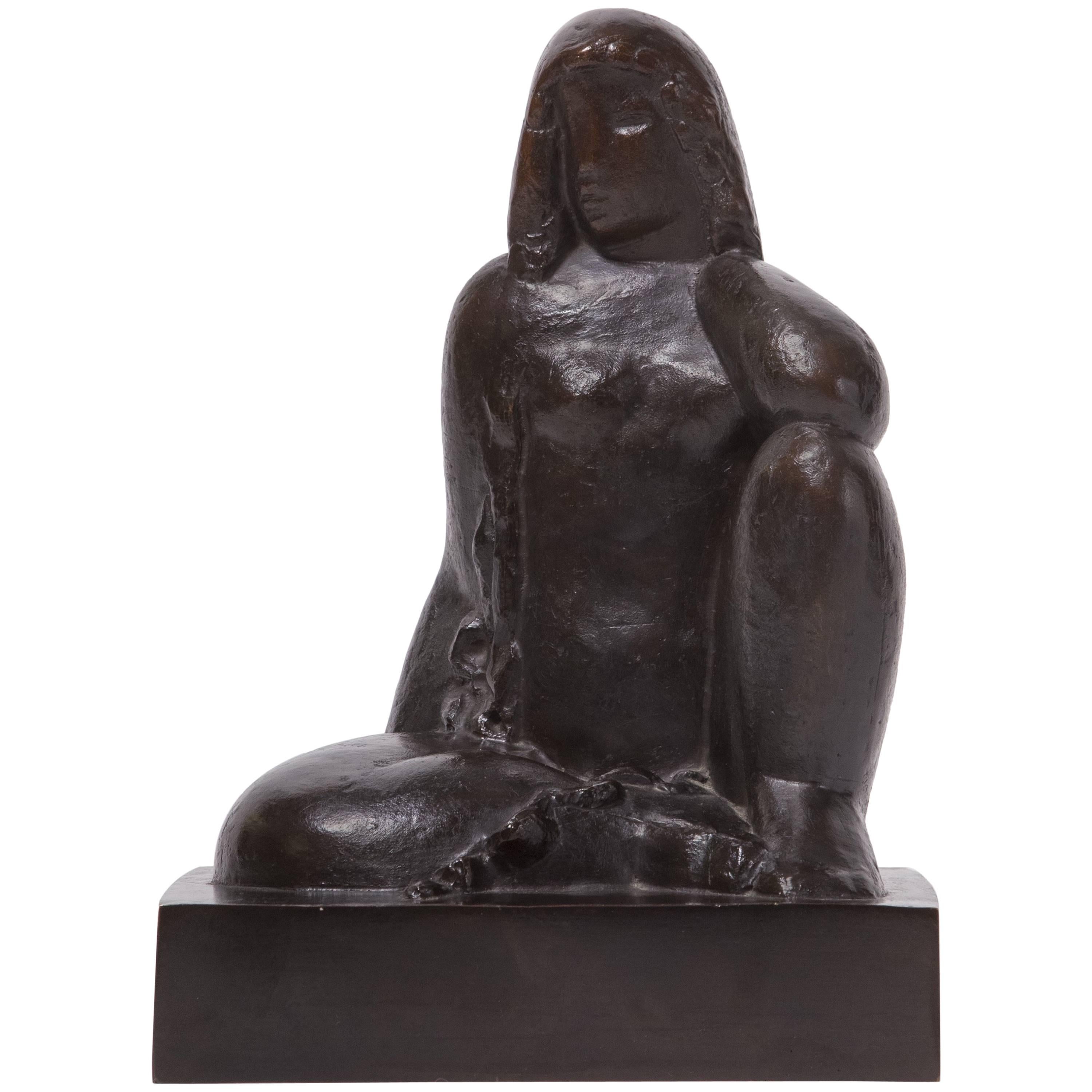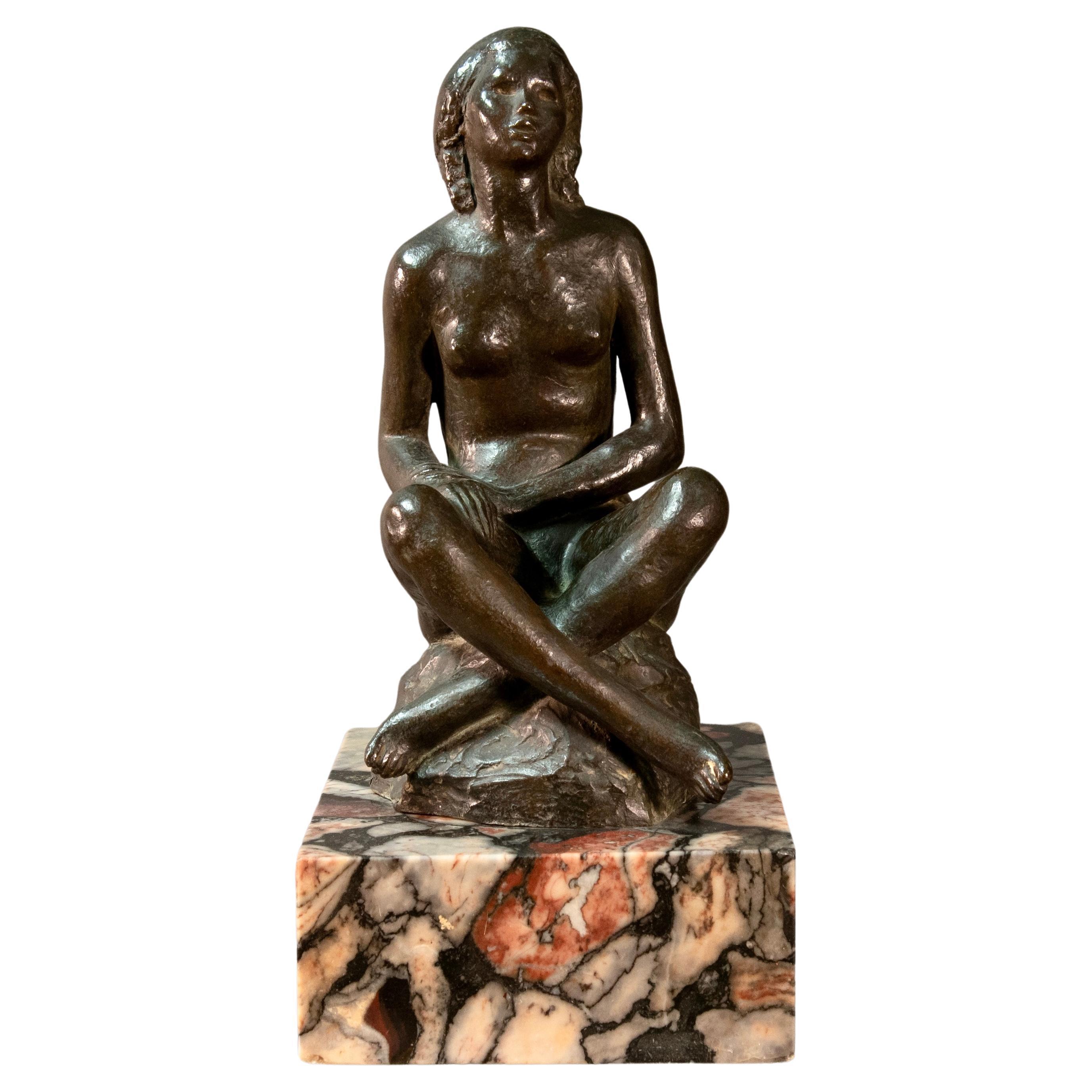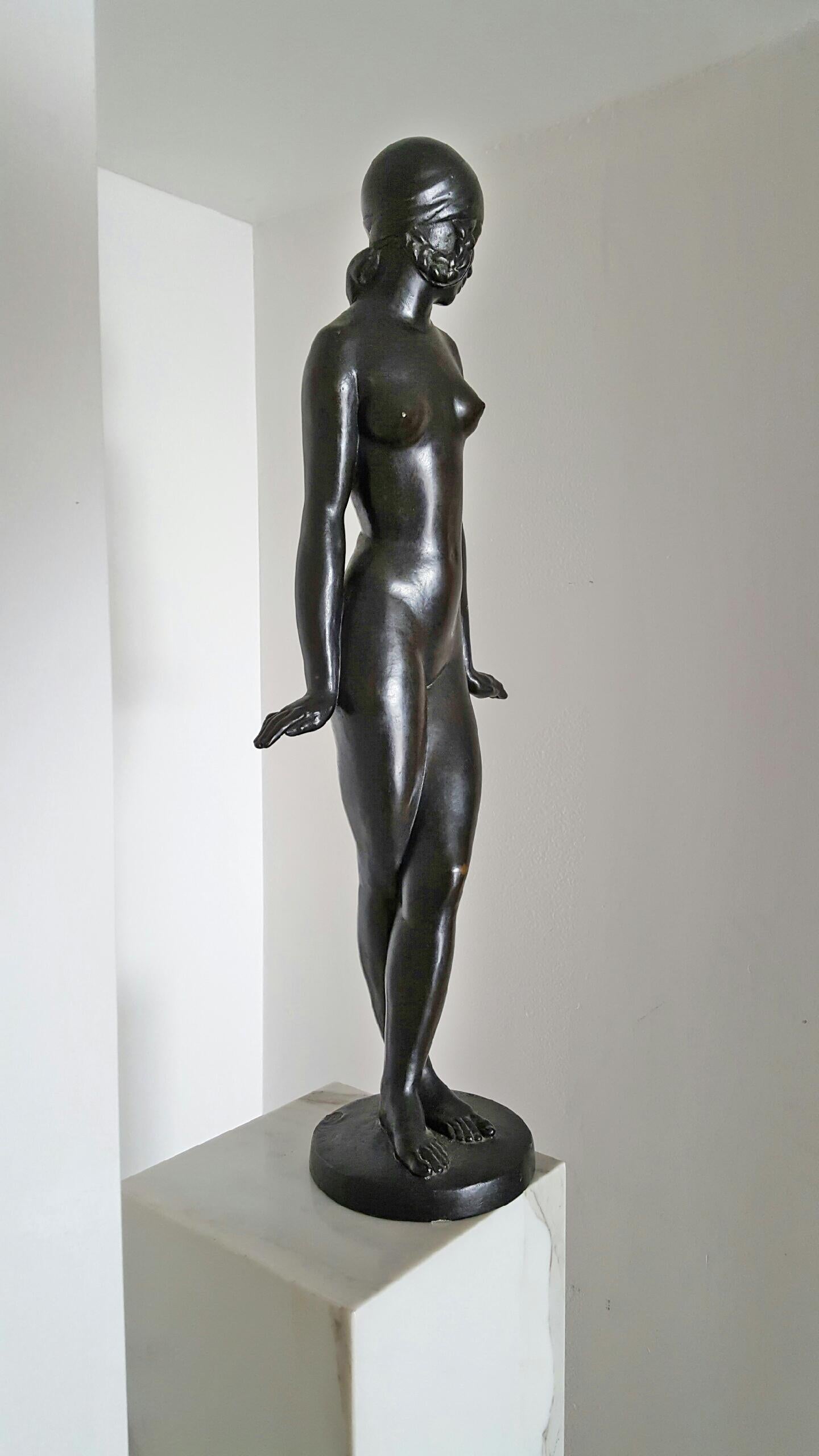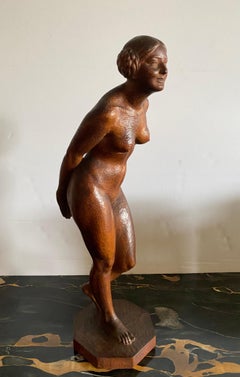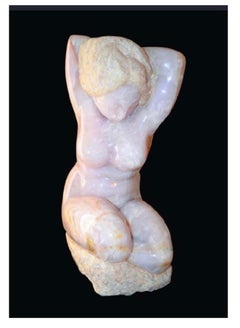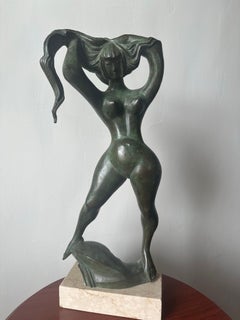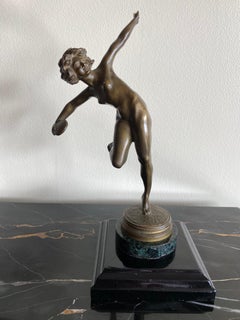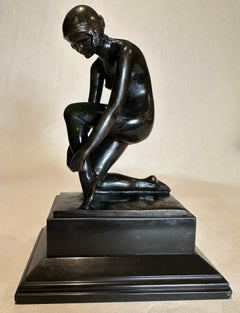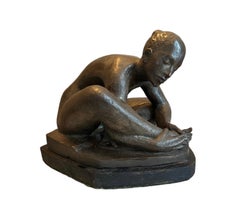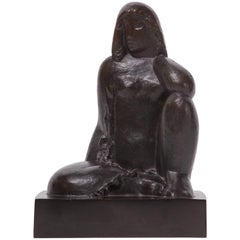Items Similar to Kneeling Nude
Want more images or videos?
Request additional images or videos from the seller
1 of 5
Serge ZeliksonKneeling NudeC. 1930
C. 1930
$2,750
£2,086.64
€2,385.88
CA$3,841
A$4,270.67
CHF 2,229.91
MX$51,984.50
NOK 28,452.69
SEK 26,658.81
DKK 17,806.28
Shipping
Retrieving quote...The 1stDibs Promise:
Authenticity Guarantee,
Money-Back Guarantee,
24-Hour Cancellation
About the Item
Sculptor, engraver and medallist. Serge Zelikson received his secondary artistic education in his native country. In 1914 he arrived in Paris, where he studied at the Ecole des Beaux-Arts under Injalbert, Bouchard and Landowsky.
During the First World War he served in the French army and in 1920 acquired French nationality. He rented the studio at 5 rue Larrey, formerly occupied by Auguste Rodin. S. Zelikson produced group sculptures and portraits, animal figures, decorative sculptures and medals.
He exhibited his works at the Salon d'Automne (1924), Salon de la Société des Artistes Français, Salon des Indépendants (repeatedly from 1920 to 1960) and in group exhibitions in Paris, Lille, Lyon, Nice, Bordeaux. In 1921, he presented his works at the exhibitions of Russian artists at the Whitechapel Gallery in London. In 1931 he erected the sculpture of Joan of Arc in the park of Le Pouliguen (Loire-Atlantique department).
In 1933 and 1934 he had solo exhibitions at the Journal gallery and in 1964 in his own studio. The collective sculpture "Les Bateliers de la Volga" was acquired by the Musée d'Art Moderne de la Ville de Paris.
- Creator:Serge Zelikson (1890 - 1966, Russian)
- Creation Year:C. 1930
- Dimensions:Height: 14 in (35.56 cm)Width: 12.5 in (31.75 cm)
- Medium:
- Movement & Style:
- Period:
- Condition:Bronze has a warm brownish green patina. Black marble base has some very small chips.
- Gallery Location:Los Angeles, CA
- Reference Number:1stDibs: LU3914471752
About the Seller
5.0
Vetted Professional Seller
Every seller passes strict standards for authenticity and reliability
Established in 1972
1stDibs seller since 2011
408 sales on 1stDibs
Typical response time: 1 hour
- ShippingRetrieving quote...Shipping from: Edgewater, NJ
- Return Policy
Authenticity Guarantee
In the unlikely event there’s an issue with an item’s authenticity, contact us within 1 year for a full refund. DetailsMoney-Back Guarantee
If your item is not as described, is damaged in transit, or does not arrive, contact us within 7 days for a full refund. Details24-Hour Cancellation
You have a 24-hour grace period in which to reconsider your purchase, with no questions asked.Vetted Professional Sellers
Our world-class sellers must adhere to strict standards for service and quality, maintaining the integrity of our listings.Price-Match Guarantee
If you find that a seller listed the same item for a lower price elsewhere, we’ll match it.Trusted Global Delivery
Our best-in-class carrier network provides specialized shipping options worldwide, including custom delivery.More From This Seller
View AllStanding Nude
By Eugene Wagner
Located in Los Angeles, CA
An original carved wood sculpture of an Art Deco standing nude .
German sculptor (1871 Berlin to 1942 ibid), studied at the Dresden Academy, took part in exhibitions in Munich, Düsse...
Category
1910s Art Deco Nude Sculptures
Materials
Wood
Kneeling Nude
By Bernard Simon
Located in Los Angeles, CA
Primarily a figure sculptor in marble and wood, he was born in Russia. In New York City, he studied at the Educational Alliance and Art Workshop and was active in numerous art associ...
Category
1960s Modern Nude Sculptures
Materials
Stone
$3,738 Sale Price
34% Off
La Toilette
Located in Los Angeles, CA
Albert Wein was born in New York in 1915 and was the only son of an accomplished woman artist, Elsa Wein. Her influence and intense commitment to nurturing the young Albert's seeming...
Category
1970s Art Deco Figurative Sculptures
Materials
Bronze
The Discus Thrower
By Claire J. R. Colinet
Located in Los Angeles, CA
Art Deco patinated bronze titled "The Discus Thrower" by
Claire Jean Roberte Colinet (1880-1950)
Raised on a circular green marble base and the attached to a square lacquered metal b...
Category
1930s Art Deco Nude Sculptures
Materials
Bronze
Coty Award
Located in Los Angeles, CA
Created C. 1943, award presented in 1965 to Gertrude Seperack for her design work in the fashion induustry.
The bronze portion measures 14 x 8.5 inches.
The Coty American Fashion Cri...
Category
1940s Art Deco Figurative Sculptures
Materials
Bronze
Hoop Dancer
By Demetre Chiparus
Located in Los Angeles, CA
Demetre Haralamb Chiparus (also known as Dumitru Chiparus) (16 September 1886 in Dorohoi, Romania - 22 January 1947 in Paris, France) was a Romanian Art Deco* era sculptor who lived and worked in Paris.
He was born in Romania, the son of Haralamb and Saveta. In 1909 he went to Italy, where he attended the classes of Italian sculptor Raffaello Romanelli. In 1912 he traveled to Paris to attend the Ecole des Beaux Arts* to pursue his art at the classes of Antonin Mercie and Jean Boucher.
Demetre Chiparus died in 1947 and was buried in Bagneux cemetery, just south of Paris.
The first sculptures of Chiparus were created in the realistic style and were exhibited at the Salon of 1914. He employed the combination of bronze and ivory, called chryselephantine*, to great effect. Most of his renowned works were made between 1914 and 1933. The first series of sculptures manufactured by Chiparus were the series of the children.
The mature style of Chiparus took shape beginning in the 1920s. His sculptures are remarkable for their bright and outstanding decorative effect. Dancers of the Russian Ballet, French theatre, and early motion pictures were among his more notable subjects and were typified by a long, slender, stylized appearance. His work was influenced by an interest in Egypt, after Pharaoh Tutankhamen's tomb was excavated.
He worked primarily with the Edmond Etling and Cie Foundry in Paris administrated by Julien Dreyfus. Les Neveux de J. Lehmann was the second foundry which constantly worked with Chiparus and produced the sculptures of his models.
Chiparus rarely exhibited at the Salon. In 1923 he showed his Javelin Thrower, and in 1928 exhibited his Ta-Keo dancer. During the period of Nazi persecution and the World War II, the foundries discontinued production of work by Chiparus. The economic situation of that time was not favorable to the development of decorative arts and circumstances for many sculptors worsened.
Since the early 1940s almost no works of Chiparus were sold, but he continued sculpting for his own pleasure, depicting animals in the Art Deco style. At the 1942 Paris Salon, the plaster sculptures Polar Bear and American Bison were exhibited, and in 1943 he showed a marble Polar Bear and plaster Pelican.
Sculptures of Dimitri Chiparus represent the classical manifestation of Art Deco style in decorative bronze ivory sculpture. Traditionally, four factors of influence over the creative activity of the artist can be distinguished: Serge Diaghilev's Ballets Russes, ancient Egyptian art, and French theatre. Early motion pictures were among his more notable subjects and were typified by figures with a long, slender, stylized appearance. Some of his sculptures were directly inspired by Russian dancers.
Quite often, Chiparus used the photos of Russian and French dancers, stars and models from fashion magazines of his time.
After the tomb of Tutankhamun was discovered in 1922, the art of ancient Egypt...
Category
1920s Art Deco Figurative Sculptures
Materials
Marble, Bronze
$4,400 Sale Price
20% Off
You May Also Like
Kneeling Female Nude, Bronze By Mario Korbel
Located in Norwood, NJ
Joseph Mario Korbel (Czech/American, 1882-1954). Period fine example bronze, dark brown patina, modeled as a nude female kneeling and tying her sandal, raised on a stepped black marb...
Category
Early 20th Century Art Deco Figurative Sculptures
Materials
Marble, Bronze
Bather
Located in New Orleans, LA
Artist Enrique Alférez was born in Zacatecas, Mexico and lived nearly the entire 20th century. After service in the Mexican Revolution as a youth, he emigrated to Texas, studied in C...
Category
1980s Art Deco Nude Sculptures
Materials
Bronze
Price Upon Request
Sculpture 'Nude Sitting' by Joseph Csaky, 1929
By Joseph Csaky
Located in Paris, FR
Sculpture in bronze with black patina
Signed and numbered 8/8. Stamped with the foundry stamp Blanchet and marked AC (Atelier Csaky)
The model from 1929, the present cast is a Post...
Category
Vintage 1920s French Art Deco Figurative Sculptures
Materials
Bronze
1920s Italian Art Decò Signed Bronze Sculpture Nude of Woman
By Gaetano Martinez
Located in Roma, IT
Wonderful Italian sculpture representing a seated maiden.
The artwork rests on a square marble base
Signed on the base “Gaetano Martinez Roma”
According a written opinion by Prof. Al...
Category
1920s Art Deco Figurative Sculptures
Materials
Marble, Bronze
Art Deco Bronze , French Nude Girl Dancer Danseuse
By Francois Emile Popineau
Located in Miami, FL
Feminine Nude Bronze with black patina Signed on Base 31 inches Paris Listed in Major Art books Iconic pose of both arms pressed close to the body with ...
Category
1930s Art Deco Nude Sculptures
Materials
Bronze
Kneeling Lament
Located in New Orleans, LA
Artist Enrique Alférez was born in Zacatecas, Mexico and lived nearly the entire 20th century. After service in the Mexican Revolution as a youth, he emigrated to Texas, studied in C...
Category
1980s Art Deco Nude Sculptures
Materials
Bronze
Price Upon Request
More Ways To Browse
Marble Sculpture Nude
Art Deco Sculpture Nude
Art Deco Bronze Nude
Art Deco Bronze Sculpture Nude
Societe Des Bronzes De Paris
French Kneeler
Joan Of Arc
Marble Nude Vintage Sculpture
Kneeling Nude
Joan Of Arc Sculpture
Marie Paule Deville
Jesus Saves
Joan Mitchell Tree
Lone Ranger
Louisiana Museum Vintage Posters
Melbourne Vintage Poster
Morpho Butterfly Art
Painting English Setter
